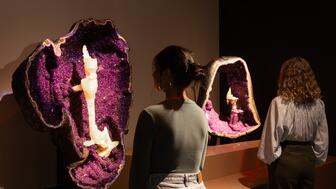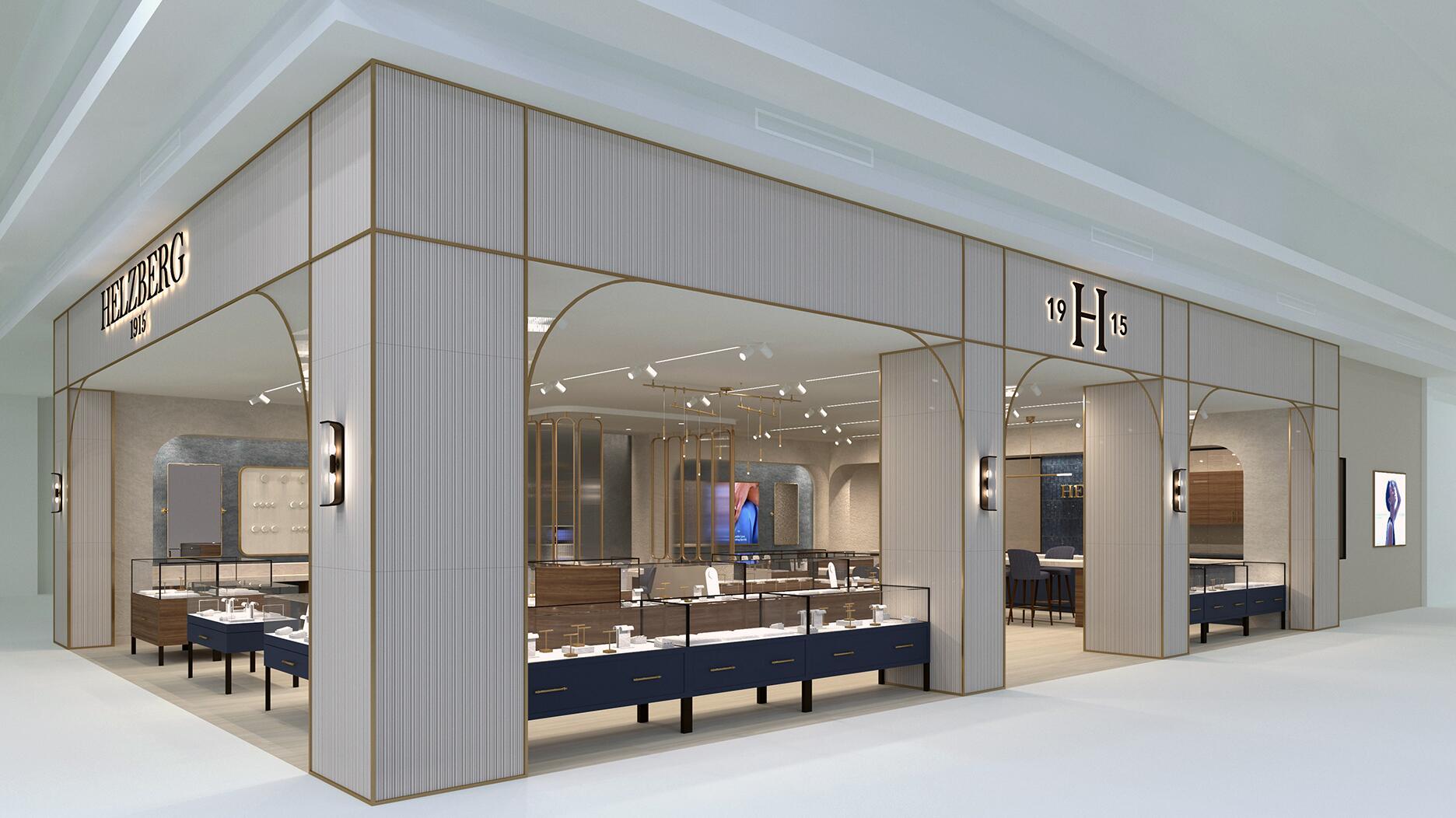From influential executives to innovative designers, we pay tribute to the people we said goodbye to this year.
4 Takeaways from a Colorful Update in Vegas
Senior Editor Brecken Branstrator highlights a few points she took away from a presentation by the AGTA’s Doug Hucker at JCK Las Vegas.
According to a new MVI Marketing study of more than 1,000 American females, when visiting a jewelry store many of them think that the stores doesn’t offer enough color.
This means there’s a big opportunity for retailers to appeal to the consumers through colored gemstones.
Jumping on any chance to learn more about colored stones, I went to American Gem Trade Association CEO Doug Hucker’s education session at the JCK Las Vegas show.
Here are just a few ideas for retailers and updates on the gemstone market from the session that I thought were worth sharing.
1. Be conscious of how you’re adapting fashion and color trends to your store.
Read the consumer magazines as well as (obviously) trade. “Those magazines are talking about what your customer is doing with all the rest of her clothing and fashion, and you better have the ability to mix and match and work with those fashion choices,” Hucker said.
For example, with the color of the year, Greenery, there are a number of gems jewelers can stock to leverage that trend, from peridot and tourmaline to green garnet.
This doesn’t mean you have to buy in to the color 100 percent, but with these trends, consider not only how you can adapt them with gems, but also how you can offer a wide range of prices with those gems.
“When you think about those palettes of color that you see in Pantone, and you start saying, ‘That, to me, looks like pink coral or that looks like this,’ also be thinking, ‘What’s the top end of that color range for price, and what’s low end of color range for price?’”
2. Keep with the classics.
Consumers still want ruby, they still want sapphires, and they still want emeralds.
Along those same lines, though, the popularity of these stones has created an overall desire for their predominant colors, which means consumers might be open to similarly colored alternatives. There could be an opportunity to offer them exciting new stones.
“What is really changing today is that a woman doesn’t really want a ruby; she wants red. And she doesn’t want sapphire, she wants blue,” Hucker said.
3. Here’s what’s going on with the sourcing of the “big three.”
These days, most rubies are coming from Mozambique and Tanzania. Burma and Madagascar also are producing, but in smaller amounts.
Burmese rubies are special because they have a
Mozambique and Madagascar stones might not be quite as fire-engine red, and may have less of a pink suggestion, while Burmese and Ceylon rubies have a pinkish look.
All of this is to say that it’s important for retailers to understand what makes each gem special, Hucker said, and to be able to share information like this and tell the stories behind particular stones.
“The one thing that will make a customer buy a gem from you, rather than from him, is because when they ask you questions they get answers that they feel comfortable with,” he said.
Sapphire is still the most important gemstone going, Hucker said.
It has elegance, history and cache. Unlike ruby, where price goes up exponentially as the gem increases in size, prices of sapphires don’t increase so rapidly because it’s more common for them to be found in slightly larger sizes.
There has been a development on the sourcing of sapphires. A year and a half ago, there was a rush on an area in Madagascar where logging was taking place and the gems were then uncovered. It’s producing incredible material and the market is seeing larger sizes come from the country, even up to 50 carats, according to Hucker.
There’s not yet a lot of commercial-quality small goods coming from there, but they might enter the market soon.
For emeralds, meanwhile, the major source is Zambia, though Colombia still is a major producer and continues to be the most renowned.
The newest player is Ethiopia, though Hucker said he doesn’t think it’s going to impact the market considerably since other sources--especially Zambia and Colombia--are still so significant. They can be rather heavily included, and so could also be heavily treated, he added.
4. The market for fine quality is still good.
Despite a decline in the Chinese dollar and decreased spending, fine stones, especially when it comes to the big three, still are rare and command top dollar.
To appeal to the millennials, though, it’s important to provide then “inexpensive fun stuff,” Hucker said.
“Inexpensive comes with semi-precious gemstones, and fun comes with out of the ordinary.”
Don’t forget: This generation wants interesting products and products with story, which gemstones have in spades. Find the stones that competitors don’t have and get them in front of this generation of buyers.
The Latest

The retailer is expanding into areas with large Indian and South Asian populations.

The Italian brand has opened its first flagship amid the peaks of the Dolomites in Madonna di Campiglio, Italy.

How Jewelers of America’s 20 Under 40 are leading to ensure a brighter future for the jewelry industry.

The new curation at the Natural History Museum of Los Angeles County showcases rare gem and mineral specimens in their uncut, natural state.


The couple pleaded guilty to concealing at least $127 million in cash transactions at its precious metals businesses.

Consumers shared concerns about prices, inflation, tariffs, trade, and politics in the survey’s write-in response section.

Roseco’s 704-page catalog showcases new lab-grown diamonds, findings, tools & more—available in print or interactive digital editions.

In February 2026, the auction house will move its headquarters to the former Steinway Hall, a neoclassical landmark on Billionaires’ Row.

The new show will take place Jan. 23-25, 2026.

The former BHP Billiton leader and Gemfields chairman is remembered for his influential leadership throughout his 50-year mining career.

The LVMH-owned brand has partnered with the costume design union to revamp its award for 2026.

The luxury titan inked a deal to acquire an initial minority stake in the jewelry manufacturer with a pathway to full ownership by 2032.

The company’s curation of unsigned vintage and estate jewelry debuted at the Bloomingdale’s in Costa Mesa, California.

In the recent multi-shipment seizure, CBP also found counterfeit Audemars Piguet, Moncler, and Chrome Hearts items.

Jewelers of America execs and National Jeweler editors discuss tariffs, the sky-high gold price, and the engagement that broke the internet.

The luxury goods company said founder Ippolita Rostagno will remain at the brand’s helm.

Laura Burdese, who joined the Italian luxury brand in 2022, will take on the role in July.

Need a gift for the cat lover who has everything? Look no further than our latest Piece of the Week.

It purchased the “Grosse Pièce,” an ultra-complicated Audemars Piguet pocket watch from the ‘20s, for a record-breaking price at Sotheby’s.

The lab-grown diamond grower now offers custom engagement and fashion jewelry through its Kira Custom Lab Jewelry service.

Chandler got his start at Michelson Jewelers and has served as DCA president and CEO since 2001. He will retire at the end of the month.

The boutique is slated to open this week inside Terminal 8, offering pre-owned Rolex watches and more to international travelers.

Sponsored by Digital Monitoring Products

The special-edition egg pendant ingested in a New Zealand jewelry store was recovered after a six-day wait.

Associate Editor Natalie Francisco plays favorites with Piece of the Week, selecting a standout piece of jewelry from each month of 2025.

The “Love and Desire” campaign is inspired by the magic that follows when one’s heart leads the way, said the brand.



























